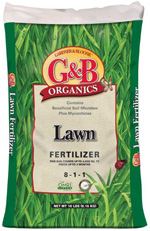|

    
 
|
 |
FEATURED QUOTE : "An addiction to gardening is not all bad when you consider all the other choices in life."
|
 |

Our parking for the seminar is full - but if you can have someone drop you off, and you bring your own chair, we still have some seating room! |
 Deciduous Fruit Trees are Here! |
 |
|
As homes continue to be built larger and garden space becomes smaller, fewer homeowners have the space to plant as many fruit trees. But that doesn't mean you have to go without the fresh taste of homegrown fruit. All you have to do is incorporate the principles of Backyard Orchard Culture. The objective behind this gardening concept is to allow for a prolonged harvest of tree-ripe fruit from a small space. This can be accomplished by planting multi-grafted fruit trees, planting two or more trees with different ripening dates in the same hole, or by espaliering fruit trees along a sunny house wall or fence line. By using multi-graft trees or planting more trees in one hole, a homeowner can now extend a 3-4 week harvest season into 10-12 weeks of different flavors. Planting or creating espaliers along a fence line can also free up valuable garden space for more fruit trees or other ornamental plants. Close planting also offers the additional benefit of restricting a tree's vigor, because it has to compete for root space and sunlight with other nearby trees. More of the tree's energy will go towards producing fruit instead of sending out new growth. Close planting also can create an environment for better cross-pollination, which also leads to increased fruit production. Most types of fruit trees need to be pruned each year to stimulate new fruiting wood, remove dead and diseased branches, or to allow more sunlight between the branches to help fruit ripen better and more evenly. If you start pruning consistently when your trees are young, it will be much easier to keep the tree at a manageable or desirable height. At the heart of Backyard Orchard Culture is the concept of summer pruning. By pruning at the same time you are thinning your crops, you will be better able to distinguish the kind of wood on which the tree sets fruit. You won't accidentally prune off any fruit because you can see it, and the new growth is always above or beyond the fruit. Reducing the size of the tree canopy will in turn reduce the photosynthesis (food manufacture) of the tree. This helps to limit the amount of food materials and energy available for the roots to store, which in turn will control the tree's capability to produce as much new growth the rest of summer or the following spring. Pruning for size control in the summer will reduce your pruning chores in winter. Once the leaves fall off, you will have a better opportunity to prune for branch spacing and overall shaping of your trees. To create an espalier tree, simply prune off anything that doesn't grow flat. Then selectively thin and train what's left to space the fruiting wood. You can espalier most fruit trees, but apples and pears lend themselves to this type of pruning better than other varieties. Smaller fruit trees can be much more manageable to spray, prune, and harvest than large trees. So, take a new look at your garden and you might be surprised at the possibilities you have for growing fruit trees. Then close your eyes and think about how great the fruit from those trees will taste! |
 |
|
1. Choose and plant camellias, azaleas and Chinese magnolias |
 |
|
The rose is a symbol of love, hope, joy, passion, remembrance, and condolence. No flower has been the subject of plays, songs and poems more than the rose. The history of the rose goes far back. The Greeks revered the red rose as having come from the blood of Adonis; the Romans used roses in their parties and thought nothing of carpeting the floor with rose petals; the Persians associated the rose with the heart; the early Christians made the rose a symbol of love in connection with the Virgin Mary and Christ's Blood. The Victorians even talked in roses, and some of that language still survives today. A red rose, of course, signifies respect and love. A yellow rose, in Victorian times, meant a jealous suitor but today means friendship. The white rose signified innocence and purity. In the U.S., white roses are often used at weddings and have acquired the additional meaning of happiness and security. Pink roses are often used to signify appreciation or gratitude. White and red roses together signify unity. White roses fringed in red have come to mean the same thing. The Victorians used more than just colors. Two roses bound together signified an engagement. A thornless rose signified love at first sight. A wilted rose, of course, signified rejection. There were also meanings in rosebuds, half-open buds and roses in full bloom, as well as meanings in the number of roses given; fifty roses, for instance, signified unconditional love and twenty-five roses were given as congratulations. For Valentine's Day, rather than give any number of individual roses, why not give a rose plant? There may be no meaning in the language of roses for a whole rose plant--but in the language of gardeners, it's surely a gift of love! |
 |
|
What's the difference between leafy veggies, flower veggies, root veggies, and fruit veggies? Answer: Leafy vegetables include "leaf-type" vegetables such as cabbage, chard, kale, lettuce and spinach, whose leaves are edible. "Flower-type" vegetables are ones such as broccoli, Brussels sprouts, and cauliflower, whose "flower" is eaten instead of leaves. "Root-type" vegetables are those such as beets, carrots, radishes and turnips, whose roots are the edible part of the plant. "Fruit vegetables" are botanically fruits but treated as vegetables in a culinary sense. These include tomatoes, peppers, and squashes. |

 click here for a printer friendly version of this page
click here for a printer friendly version of this page
 |
Written content © Garden Partners LLC, or respective authors. All Rights Reserved. Privacy Policy. All written content contained in this site is protected by United States copyright law and may not be reproduced, distributed, transmitted, displayed, published, or broadcast without prior written permission of Garden Partners, LLC. You may not alter or remove any trademark, copyright or other notice from copies of the content. |



